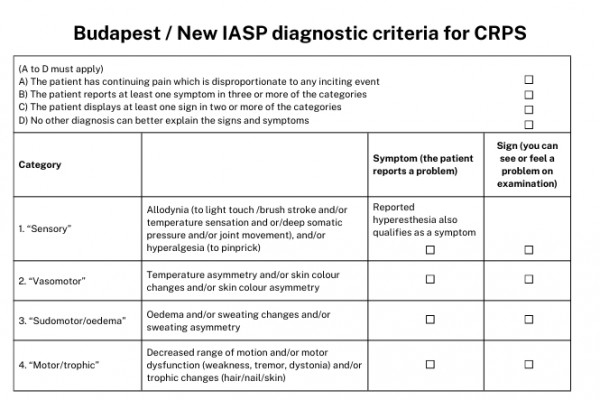Complex regional pain syndrome (CRPS) is a condition that usually develops after an injury or trauma, eg, a fracture, sprain, crush, or surgery. It’s not very common but is a recognised medical condition. It usually affects a single arm or leg, but over time can affect other parts of your body.
Symptoms generally start within a month of the trauma and continue for longer than would be expected after an injury or event.
There are 2 types of CRPS. They have similar symptoms but different causes:
- Type 1 is the most common and happens after an illness or injury that didn’t involve nerve damage. It used to be called Reflex Sympathetic Dystrophy (RSD) or Sudeck’s atrophy.
- Type 2 happens after nerve injury and used to be called Causalgia. Nerve injuries can cause symptoms very similar to CRPS, but it's called CRPS if your symptoms go past the part of your body that's controlled by the injured nerve.
Symptoms like CRPS that happen after a heart attack or stroke are usually called Shoulder-Hand Syndrome.







